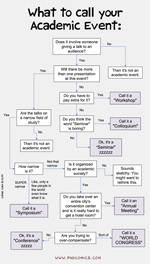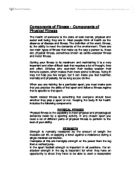Python 3 - IF.ELIF.ELSE Statements - Tutorialspoint.
An else statement can be combined with an if statement. An else statement contains the block of code that executes if the conditional expression in the if statement resolves to 0 or a FALSE value. The else statement is an optional statement and there could be at most only one else statement following if.
In any event, when you have finished with the if statement (whether it actually does anything or not), go on to the next statement that is not indented under the if. In this case that is the statement printing “Thank you”. The general Python syntax for a simple if statement is.

In Python you can define conditional statements, known as if-statements. A block of code is executed if certain conditions are met. Consider this application, it executes either the first or second code depending on the value of x. If you set x to be larger than 10, it will execute the second code block. We use indentation (4 spaces) to define.

An else statement can be combined with an if statement. An else statement contains a block of code that executes if the conditional expression in the if statement resolves to 0 or a FALSE value. The else statement is an optional statement and there could be at the most only one else statement following if.

If the text expression is False, the statement(s) is not executed. In Python, the body of the if statement is indicated by the indentation. Body starts with an indentation and the first unindented line marks the end. Python interprets non-zero values as True.

Python If Else Statement Example. In this Python If Else statement program we are going to place 4 different print statements. If the condition is true we will print 2 different statements, if the condition is false we will print another 2 statements using Python if else statement. First, Please open your favorite IDLE to write Python script.

In Python, you have the if, elif and the else statements for this purpose. In this tutorial, you will work with an example to learn about the simple if statement and gradually move on to if-else and then the if-elif-else statements.

The Python If statement is one of the most useful decisions making statements in real-time programming. Python If statement allows the Python compiler to test the condition first, depend upon the result, it executes the code block. If a given test condition is true, then only statements within the if statement block executes.
Contents1 if statement2 if-else statement3 Nested if and if-else statement3.1 if statement inside another if statement.3.2 if-else statement inside else clause.4 if-elif-else statement The programs we have written so far executes in a very orderly fashion. This is not how programs in the real world operate. Sometimes we want to execute a set of statements. Read moreIf-else statements in Python.

If the weather is nice, then I’ll mow the lawn. (It’s implied that if the weather isn’t nice, then I won’t mow the lawn.) In a Python program, the if statement is how you perform this sort of decision-making. It allows for conditional execution of a statement or group of statements based on the value of an expression.

With Statement in Python. If you want a cleaner and elegant way to write to a file in Python, then try using the WITH statement. It does the automatic clean up of the system resources like file handles. Also, it provides out of the box exception handling (Python try-except) while you are working with the files. Check out the following example.

In Python, break and continue statements can alter the flow of a normal loop. Loops iterate over a block of code until test expression is false, but sometimes we wish to terminate the current iteration or even the whole loop without checking test expression. The break and continue statements are used in these cases. Python break statement.

IF Statements in Excel. In this article, I’ll walk you through a short primer on writing a IF statement in an Excel worksheet. To get started, you should understand the basis of all IF statements: IF condition THEN true ELSE false. That’s pretty much it. The condition is usually a comparison of something. That something is normally numbers.



